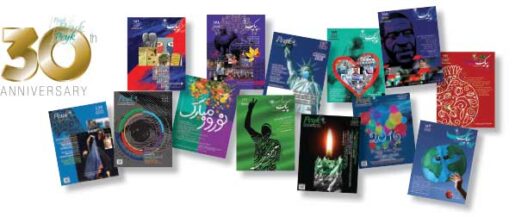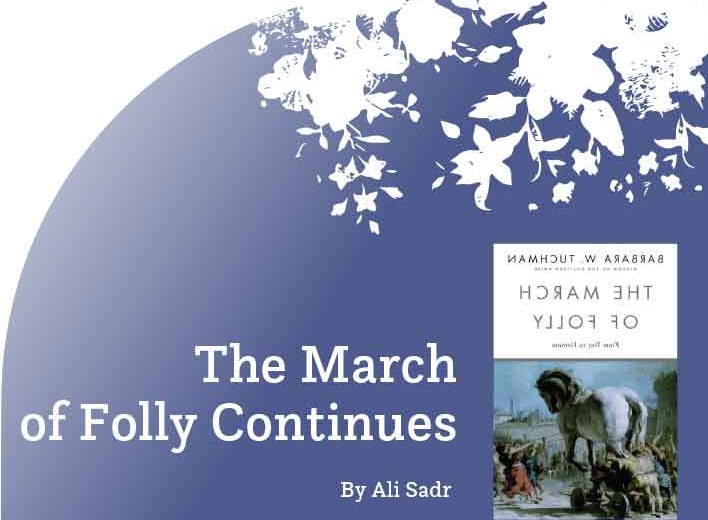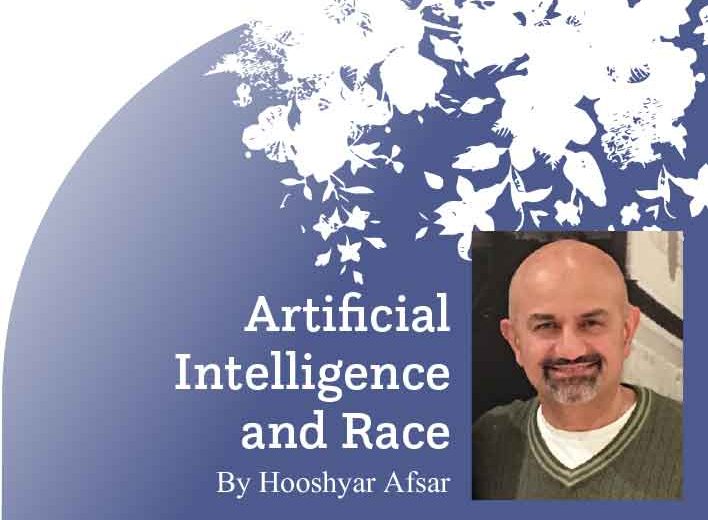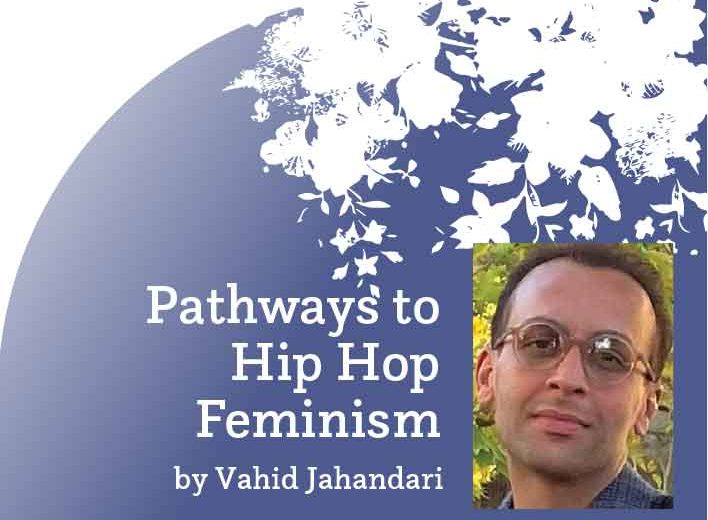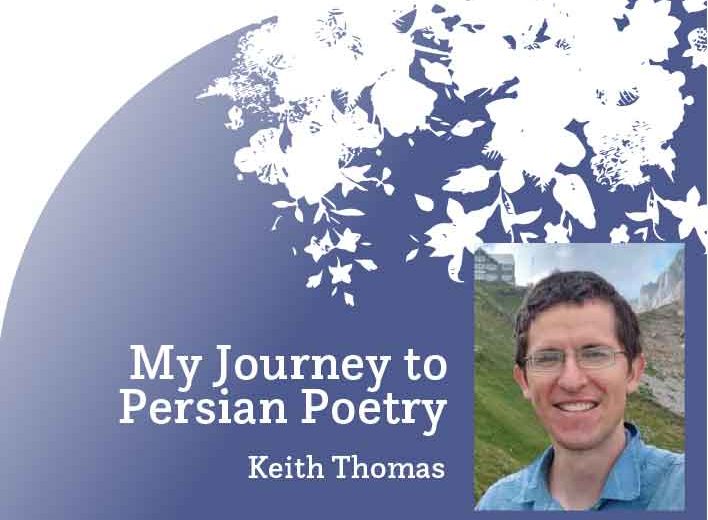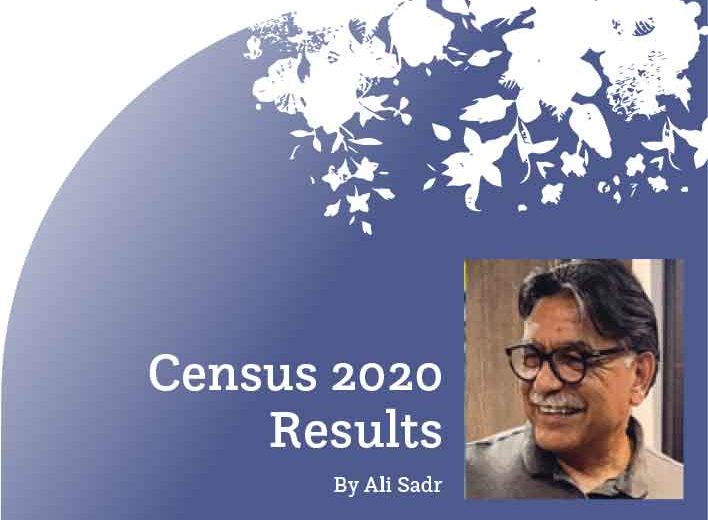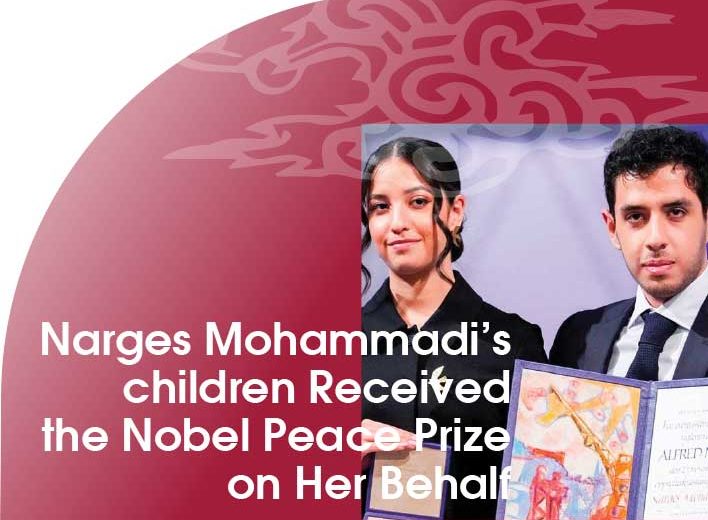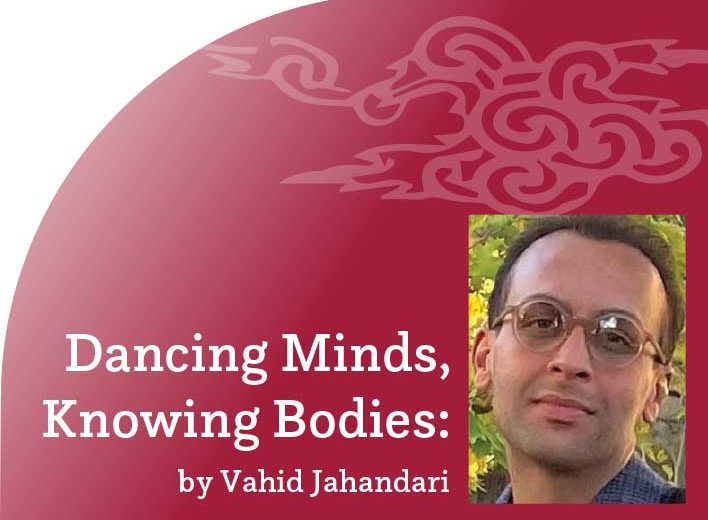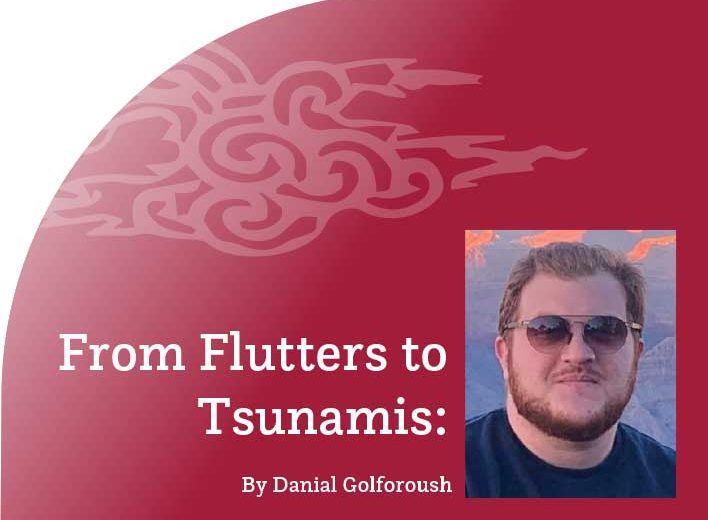As a member of Peyk’s editorial board and its English language copy editor for more than a decade, I celebrate Peyk’s longevity and cultural impact along with everyone else involved in this endeavor. When we were preparing this issue, I realized I did not know Peyk’s origin story or how it grew from humble beginnings to the magazine it is today. To find out more and let our readers in on Peyk’s remarkable history, I was fortunate to interview three of my colleagues on the editorial board: Mr. Reza Khabazian, who initiated the newsletter that is the foundation of today’s magazine; Ms. Shahri Estakhry, who has taken on myriad roles and responsibilities at Peyk over the past 30 years; and Mr. Ali Sadr, Peyk’s current and longtime editor-in-chief. These interviews have been condensed and edited for clarity.
~Rachel Tait
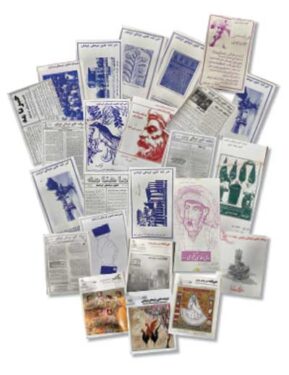
Peyk’s Inception: A PCC Newsletter Is Born
Rachel Tait (RT): Hi Reza, thank you for taking the time out to go down memory lane with me. I understand that in 1991, as a board member of Persian Cultural Center (PCC), you volunteered to start the “PCC Newsletter.” What compelled you and PCC to start a newsletter about the Iranian American community here in San Diego?
Reza Khabazian (RK): From the time I became a board member in 1991, I realized the need for having a publication as a means to communicate with the Iranian community at large. At that time, in the absence of today’s social media, the task of communicating with the public could only be accomplished with some sort of newsletter. I introduced the idea to the board and easily got their approval. PCC was not in a financial position to cover the cost of such a publication, so I suggested that every board member sponsor the cost of one issue. With eleven board members at the time, I figured we could publish for almost one year.
RT: What do you remember about the first few issues of the newsletter?
RK: The first issue was a single page. The content was written by hand in Persian and sent to a friend (Mr. Mohammady) for typing and another friend (Mr. Heydari) for printing, free of charge of course. After the first five monthly newsletters, the issue was raised at the board to encourage the community’s business owners to sponsor us by having an advertisement in our newsletter. Then the cost of the sixth issue was covered with advertisements.
RT: How long were you involved with the newsletter?
RK: Overall I stayed in charge for 7 or 8 issues before Ms. Shahri Estakhry, with the help of Mr. Mohammady, came to the rescue—this automatically improved the quality of our newsletter, such as having an English page and going beyond a mere newsletter by including some educational and cultural essays.
RT: Producing a newsletter before computers were commonplace must have been difficult. What was the process like?
RK: The printing process, from start to finish, was painful and at the same time was comical! Let me tell you about it, it went something like this:
Writing the entire content by hand (first 3-hour meeting).
Typing with the help of only one finger!
Sending to a friend who had access to a laser printer.
Adjusting the different parts of the content to set in a desired format (second meeting of 4 to 6 hours).
Setting the pieces on a final draft using Cut and Paste.
Taking the final draft to the printing shop, whose owner thankfully only charged us just his cost for printing 300 copies.
Putting on address labels (third meeting of 3 to 4 hours).
Delivering copies to the post office and Iranian stores (additional 4 to 5 hours).
Begging the store owners for a better display of the newsletter (endless hours!!).
Growing Pains: From Newsletter to Magazine
RT: Let me turn now to Ms. Estakhry—thank you for joining us today! I know you are one of the founders of the Persian Cultural Center and one of the original board members. Mr. Khabazian credits you with improving the newsletter process. How did you become involved with the PCC newsletter in the first place?
Shahri Estakhry (SE): Originally, the purpose of the one-page newsletter was for PCC to communicate with the community and let them know of our programs and familiarize them with PCC’s agenda. I got involved because I wanted to help Mr. Khabazian.
RT: Did you take over responsibility of the PCC newsletter right after Mr. Khabazian?
SE: No, not right away, we had other PCC board members work on it for a while.
RT: How long were you in charge of the newsletter?
SE: I really don’t remember how long, but honestly it seemed forever. Let’s just say YEARS that made me grow older and older!
RT: Ha! I understand. During your time, what changes took place in the appearance and quality of the newsletter?
SE: During our time—I say “our” because here much credit goes to Rahim Mohammady, who carried the heavy burden of making sure we were on time and the haul of everything—it was the era of “cut and paste” as I call it. We didn’t have the luxury of today’s computer systems nor the brilliancy of [Peyk’s graphic designer] Saeed Jalali, so we became creative and did what we could. The era of cut and paste finally ended—with special thanks to Dr. Shahrokh Ahkami of Persian Heritage, who introduced to us the Farabi team in New Jersey—and thus began a professional system for the newsletter. The Farabi team’s work was terrific and a great help to us, freeing us up to take care of the distribution. During this time, we added a few English pages and I think we went from four to eight and then to sixteen pages per issue.
RT: How many copies were being distributed at the time, do you remember?
SE: Before the newsletter transformed into the present Peyk, I think we had around 2,000 distributions per issue. Remember, back then, it was just for a San Diego audience.
RT: At what point did the newsletter become Peyk? And when did it become bilingual?
SE: We had a tug of war before we decided to go with Peyk as the name and, though I was initially against the name change, now I’m glad we did, it is a great name. The reason it became bilingual was for our English-speaking audience from the young people to many spouses and friends who could and would enjoy learning about our cultural heritage and be encouraged to be part of our community, i.e., people like yourself. I think one priority for any immigrant group is to learn and communicate in the language of their host country. In general, we are good at that.
RT: What was the most difficult part of working on the newsletter/magazine?
SE: The cut and paste era and when the hours ran into 2-3 a.m. Sometimes I was so exhausted that by the time I got home, I just kicked my shoes off and jumped on my bed with all my clothes still on just to get three hours of sleep before having to get up and get ready for work. Then we wonder why we grow old so quickly!
RT: What different roles have you taken on with respect to Peyk? Do you have a favorite contribution?
SE: Ha, ha, I’ve had many roles… from cutting and pasting to editor-in-chief (though I never gave myself the title) to writing the English editorial. Again, all with the usual tug of war to keep the English and Persian editorial sections separate and by different people. Woohoo, we won and the English editorial, as I always have hoped, is still under the vision of a woman [Shaghayegh Hanson]. The outlook of thoughts of different individuals is what makes Peyk so unique, and of course, women perceive everything differently and thus should have a separate voice in Peyk.
I look at Peyk as the voice for our community and its growth in our new homeland. Not everyone may agree with or like some of the content that it contains, but we don’t write or publish to please a few individuals; we educate and move forward with what is right, just, and best for us as a community of new immigrants in this vast new country of ours.
The Modernizing of Peyk Magazine
RT: And this brings me to Peyk’s current and longtime editor-in-chief, Ali Sadr. Ali, how did you first become involved with Peyk?
Ali Sadr (AS): I personally joined PCC’s board of directors in 1992 and have been involved with Peyk ever since, one way or another. For the purpose of this interview, I went through Peyk’s archive to review all our past issues and try to put together a history of the magazine for the past 30 years. I checked the shape, format, writing style, number of publications, and who was in charge of the publication at different times.
RT: Great, will you take me through the chronology of Peyk’s development based on your research?
AS: Sure. In October 1991, the first issue was put together and published by Reza Khabazian, as he mentioned. The newsletter was a two-sided sheet of paper, 14 by 8 ½ inches. The same format continued monthly for about 8 months, all in Persian. Then, for Issues 9 to 16, the responsibility was transferred to Shahri Estakhri.
Starting with Issue 17, in April 1993, the responsibility was given to Dr. Hossein Motlagh. It was then that the format changed to four pages of 8 ½ by 11-inch paper, and “Khabarnameh” (Newsletter) was renamed “Maahnameh” (Monthly). From Issue 31 in June 1994 to Issue 36 in May 1995, I was responsible for the publication with the same format.
Starting with Issue 37, in August 1995, the name went back to “Khabarnameh Kanoon Farhangi Iranian,” or the newsletter of Persian Cultural Center, and became bilingual and bimonthly, under the responsibility of Shahri Estakhri, Reza Khabazian, and Rahim Mohammady. In March 1996 (Issue 43), the number of pages increased to 8 and then it went to 12 pages, with circulation increasing to 2,000 copies. I was directly or indirectly involved with the process.
Gradually, the number of contributing writers increased, as did the number of advertisements and naturally the number of pages. This continued to Issue 79 (May-June 2002). At this time, the “Khabarnameh” was 32 pages long and was being set up and printed in New Jersey by a professional company and then sent to us for distribution. In June 2002, the helm was given to me by PCC’s board of directors for only two issues, until we could find a replacement. Here we are nineteen years later.
RT: That’s a long search for a replacement! (laughs) How has Peyk grown since you took over?
AS: As I mentioned, I wasn’t a stranger to the newsletter and had been cooperating with the team for several years at that point. At the time, the circulation was about 3,000 and we had a good group of writers, such as Zohreh Ghahremani, Mercedeh Mehrtash, and Medi Moein, to name a few. The company that was providing the technical support was no longer available and I had to put together a team for typing and design and printing of the magazine. The first issue was a disaster. Then things were just very difficult until we got the hang of it and learned the ropes. Ideen Sadr, Vahid Alavi, and finally Saeed Jalali were instrumental through this transition. We aggressively went after advertisers to help to support these changes.
But we were at a crossroads. Either stay the same or become a professional cultural magazine. For me, there wasn’t a choice. We had to grow. We couldn’t make those changes as a “newsletter.” I suggested to PCC’s board of directors that we rename the magazine Peyk (meaning the messenger). They agreed and, starting with Issue 84 (March-April 2003), the name Peyk was adopted. The number of writers, both in the English and Persian sides, increased. From Issue 88 (Nov-Dec 2003), Saeed Jalali became the exclusive designer of Peyk. At this time, we only could afford color for covers, but gradually added more color ads inside until Issue 100 (Nov-Dec 2005), which was fully colored. Circulation increased to 6,000.
RT: So much growth in those years! What else has Peyk achieved?
AS: Peyk has become perhaps the only Iranian American cultural magazine in the region, if not the country. As you know, we at the editorial board are constantly looking for good writers to bring different and new points of view to the magazine. Most of our writers have their own columns, and the variety of articles are amazing. All of our articles are original; Peyk rarely reprints previously published articles. We value our educational role.
Not only is Peyk directly mailed to our members and subscribers, but it is also distributed at Iranian American centers, libraries, Iranian businesses, and Persian schools locally and in other parts of the country.
Time has changed and a lot of people get their information and reading material from the internet, either on their computers and tablets or via their smartphones. We had to comply as well. We launched Peyk online in July 2019. All articles are now posted there and readers can leave comments for the writers. This has been our latest achievement. Our archive is also available digitally on PCC’s website.
RT: You mentioned PCC. What is Peyk’s relationship with the Persian Cultural Center these days and how is Peyk run?
AS: Peyk belongs to PCC and fulfills part of PCC’s cultural and educational activities. The PCC board of directors selects the editor-in-chief; I was given this responsibility in 2002 and I am also managing director of Peyk. In that role, I present a report about Peyk at every PCC board meeting and I also submit an annual report for the general assembly of PCC. Peyk has an editorial board whose members are in charge of gathering materials and choosing, editing, and proofreading selected articles. We have regular meetings before preparing each issue.
RT: Yes, our editorial board meetings have become good opportunities to brainstorm themes for each issue and focus on areas of interest and education for our readers. Speaking of our readers, Peyk is distributed free of charge. Where does Peyk’s budget come from?
AS: All writers and editors volunteer their services. The bulk of our expenses come from printing, mailing, and distribution. A large portion of our income comes from ads. We limit how many ads we place in Peyk—this is a limitation we have imposed on ourselves because we do not want to make the magazine look like junk mail, plus the advertisements can attract the attention they deserve. The balance of Peyk’s budget comes from membership fees and grants. PCC receives a grant from The City of San Diego Commission for Arts and Culture and, this year, Peyk received a grant from the Persian Heritage Foundation.
We are grateful for the support of PCC members, Peyk subscribers, businesses, advertisers, and grant providers for their support. Without their support, Peyk would not exist.
RT: Has Peyk been recognized outside of the Iranian American community?
AS: Yes, Peyk is one of the manifestations of the Iranian immigrants in this country. It shows how the first generation of immigrants struggled to establish themselves in the new homeland and trail-blazed for future generations. This is part of our history.
Peyk has been registered with the Library of Congress in Washington, DC, and an archive of the magazine’s issues is being kept there. In addition, I understand several universities that study Iran and immigrants are collecting Peyk. We do have non-Iranian subscribers, too. Receiving the grants we have indicates that Peyk is recognized as having a positive cultural impact.
RT: What are your proudest achievements at Peyk? Any favorite contributions or articles?
AS: It is really hard to say. I think the entirety of Peyk is one of my proudest achievements. Every issue of Peyk is. Peyk has created a venue and a platform for me and other writers to communicate with our community. My proudest moments are when I see our young writers use this platform for their voices. Aria Fani started with Peyk when he was still a teenager. Now he is a professor of Iranian Studies at the University of Washington and still writes for Peyk. As a matter of fact, he has become one of the pillars of Peyk. Doesn’t that make you proud? We have had or have other young writers—Leily Rezvani, Marriam Zarrabi, and Lily Mojdehi, to name just a few. They all make me proud.
Peyk’s Future: The Hope to Continue for Another 30 Years and Beyond
RT: Thank you so much to all three of you for your time looking back at Peyk’s origin and its ever-evolving existence. As we wrap up this retrospective, I’d like to know each of your hopes for Peyk as it continues in the future.
RK: We live in an era in which social media dictates the ultimate rules—we need to follow its desire. The organizers of all cultural magazines, like Peyk, can fight as long as this generation is well and alive and willing to publish hard copies, but eventually having them fully online is the remedy. I believe the sooner we get on this train, the better off Peyk will be.
SE: Today, Peyk has established itself as a front runner for our community. It is online and accessible throughout the world. We have a rich cultural past, thousands of years of culture and history, and great contributions to the world. We lack great representation of who we are and the respect we deserve. Peyk’s volunteer editorial board and contributors are all passionate about adding to our readers’ daily lives—to learn, to appreciate, to respect, and to reach out to conquer our differences.
I know how hard it is to produce each issue. I know what Ali Sadr and Saeed Jalali and our team working on Peyk go through until an issue hits the stands or is delivered. I know what you, Rachel, and Shaghayegh go through in lining us all up to make sure we are doing the best possible work, and I’m deeply grateful to all for the love and passion that you show in having Peyk represent us.
I hope Peyk will always be the voice of truth, encouragement, and representation for our community. I am so proud to have been part of this team for these past 30 years. Here is to many more 30s under caring leadership!
AS: My hope is for sustainability. We’ve come a long way. This has been a joyful evolution. From a single-page newsletter to a well-established magazine. Our editorial board and all our contributing writers are volunteering their time to Peyk and share this joy. The only weakness of Peyk is that it is published every other month. At a time that we are constantly flooded with information and misinformation, it is hard to stay relevant. The only tool we have is the quality of our materials, sincerity, and honesty. We belong to the community. We are serving this community. We don’t have any hidden agenda. We at the editorial board love to do this.
Financial matters are a different story. Peyk is online and has a presence on social media to serve our younger audience and computer savvy readers. But we still have many loyal readers who prefer the printed version, plus many of our advertisers prefer printed ads. We are grateful to the businesses who support us by advertising in Peyk, but advertising income barely covers half of our expenses, which is mainly ever-increasing printing and mailing costs. Membership fees and grants fill the gap and—so far—have made the publication possible. To become financially sustainable, we need more advertising revenue; our readers can help by supporting the businesses that support Peyk.
This is what I envision for the near future. One thing we all learned from this pandemic is unpredictability. And one thing we learned about ourselves is adaptability. As long as the Iranian American community wants us, we will continue our service.
